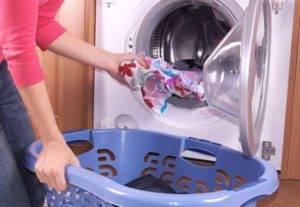 Washing machines, like any other equipment, can break down, and most often they stop spinning things. Finding out about this is quite simple - you take out excessively wet things from the drum of the machine that need urgent spinning. For what reason does the washing machine not spin?
Washing machines, like any other equipment, can break down, and most often they stop spinning things. Finding out about this is quite simple - you take out excessively wet things from the drum of the machine that need urgent spinning. For what reason does the washing machine not spin?
Main causes and symptoms of malfunction
To understand that your washing machine has stopped performing the spin function, you should know the characteristic signs of this negative manifestation:
- The program is completely finished, but there is still liquid in the drum. The drain function does not work;
- the things in the drum are quite wet;
- the water drains too noisily;
- draining occurs as usual, but things are not wrung out;
- the spin function works every other time, the washing machine refuses to respond to the entered parameters;
- the machine hums as if it is spinning clothes, but in reality this does not happen;
- The drainage is quite slow.
These are the main signs to look out for. What are the reasons why the washing machine does not spin clothes?
- The washing process is programmed incorrectly.Often, it is precisely such errors that become the reason for the machine’s refusal to wring out washed items. For example, we defined delicate washing. A number of models do not perform spinning in certain programs, even when a certain number of revolutions is assigned as an addition. You just need to check which mode you have defined. To know exactly when the washing machine spins things out and when it doesn’t, it is recommended to study the operating instructions, which describe such things in detail. The problem can be solved simply - the spin function is turned on separately, and then programs in which it is present are selected.
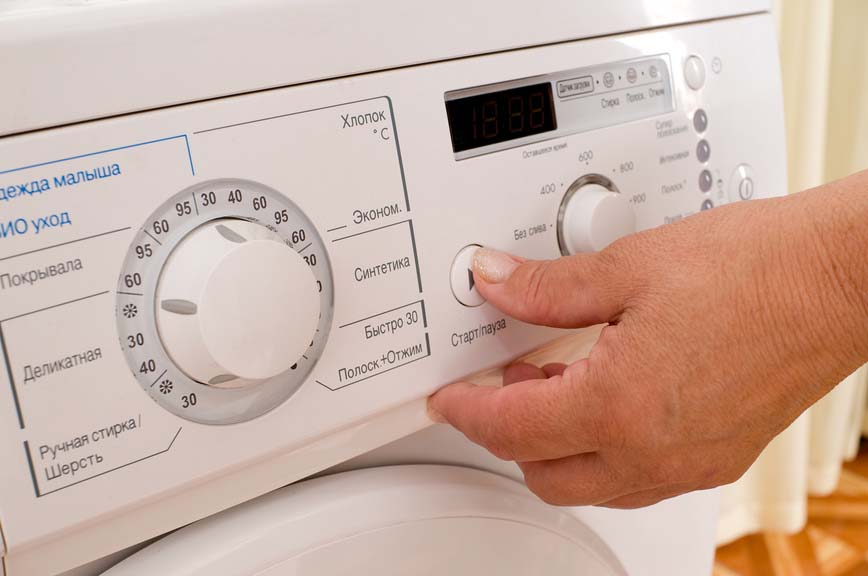
- Unevenness when loading things. When one heavy item or several lighter ones are placed in the drum, the machine is not able to properly distribute them throughout the drum. This causes an imbalance, a particularly sensitive sensor begins to detect significant vibration, and the machine reduces the number of revolutions to save the drum from unpleasant shaking. This happens when a load of laundry gets bunched up. Add several small items to one large item to balance the load. The second option is to distribute the laundry more carefully along the drum walls.

- Water does not pour out. When it remains in the drum, the washing machine does not spin. The sensor responsible for monitoring the water level sends error information and the drum stops rotating. Perhaps the problem lies in the pump responsible for draining, or the filter is clogged. It happens that the water drains, but the washing machine still does not work in the spin mode. In this case, it is recommended to check the sensor responsible for the liquid level.
- The tachometer has failed.With its help, the number of revolutions made by the drum is controlled. When an element breaks, the washing machine is simply unable to activate the spin process. This type of failure can be found at any manufacturer. It often happens due to the long service life of the unit. It’s rare, but it does happen when the reason that the machine stops squeezing things out is due to loose fasteners.
- Malfunction of the module responsible for all control. It can break due to voltage surges, defects made at the factory, water penetration, erroneous actions during operation and for other reasons. The result is that SMA does not push things away. Sometimes repair work on the module helps, but in most cases the element requires complete replacement, which implies significant financial costs.

- Electric motor failure. Quite an unpleasant situation. It is likely that there is a break in the winding, or one of the components has broken. The result is that the washing machine does not wring things out well. There may be several reasons - voltage drops, wear and tear from a long service life, etc. Having realized that the motor has stopped working correctly, it is recommended to contact a service center.
During the spin process, squeaks and knocking noises are heard
Sometimes you can encounter such a breakdown - a knocking sound that appears during the operation of the SMA or directly during spinning. This happens when small foreign objects that were previously in your pockets get into the space formed by the washing machine drum and its tank. To remove them, you will have to pull out the water heating element.
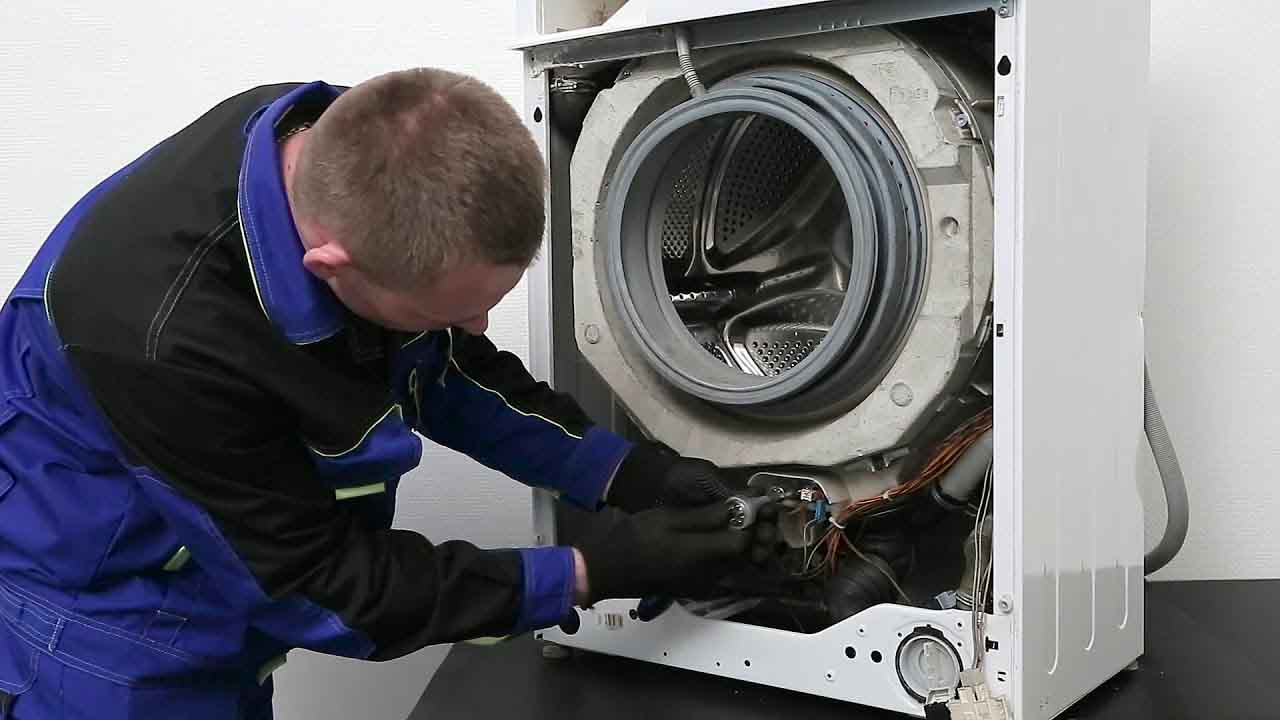
If you neglect such moments, the consequences can become unpredictable, up to the complete jamming of the washing machine.
The machine may also creak due to worn bearings and the drive belt. In each case, you will have to disassemble the unit and inspect the specified elements.
Why do such problems still arise?
As follows from the statistics, the pump responsible for draining the water often breaks down in the washing machine. This is typical for inexpensive models that do not have a filter element in front of the drain point, and any foreign object can cause the pump to break down. You can understand that this is where the problem lies by looking at certain signs:
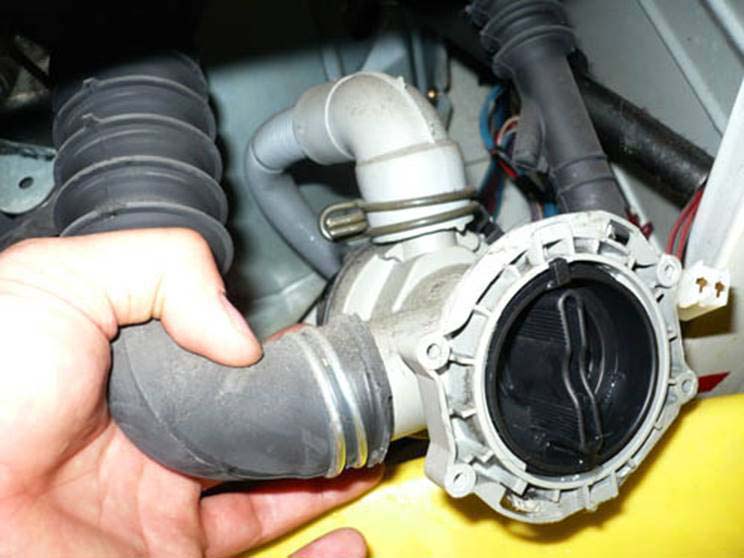
- The washing mode is completed, nothing happens, only a strange slurping sound is heard;
- one gets the impression that this very minute the water will begin to drain, the machine will begin to wring out things, but instead it will completely “freeze”;
- After some time, everything remained unchanged - the spin cycle did not start.
In such a situation, you should call a specialist who will check the drain pump and repair it, or completely replace the unit.
How to clean the drain filter
I would like to say a few words about this, because your actions will depend on the specific model of the washing machine:
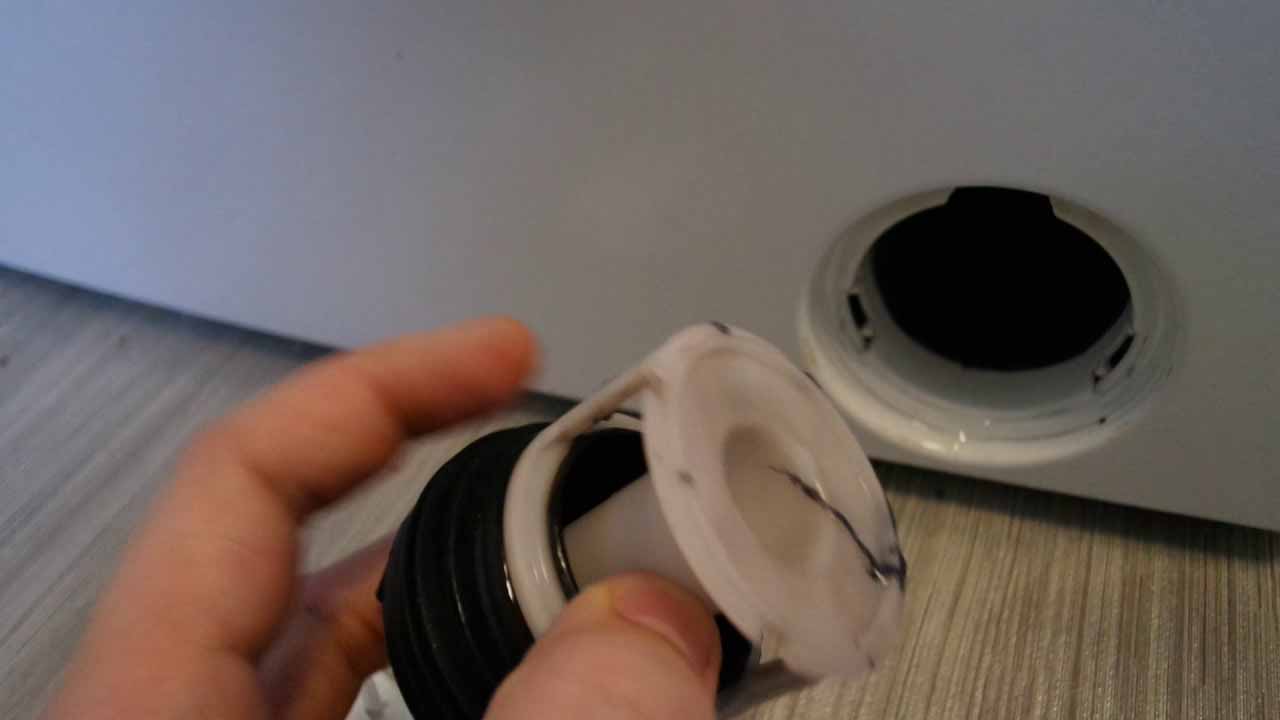
- In Indesit, the hatch is made of fragile plastic material, and it must be opened quite carefully;
- Samsung is distinguished by the presence of special latches that open with a simple screwdriver;
- The hatch in Lg will not give in to you easily - you must press the button intended for this;
- Ardo also has access to the filter element from the front, but from the front side of the housing.
Unscrewing each filter is done the same way, only on certain models there are screws in the form of clamps. It is recommended that you carefully inspect the cap before you try to unscrew it.
Having organized access to the filtering device, it must be thoroughly cleaned and installed in its place. After this, it is recommended to test the washer. It is quite possible that this was not the only problem.
The spin function does not turn off
Problems with the module responsible for the operation of the entire washing unit can be expressed in the fact that the drum does not stop at all. After this, your washing machine will simply freeze. It also happens that the laundry washing machine only rinses and wrings, without performing its main function - washing. Or the opposite happens - washing goes fine, but there is no rinsing.
Each of these signs hints at problems that have arisen in the “brains,” which explains such an incomprehensible operation of the automatic device.
Your independent intervention may be limited to the following actions:
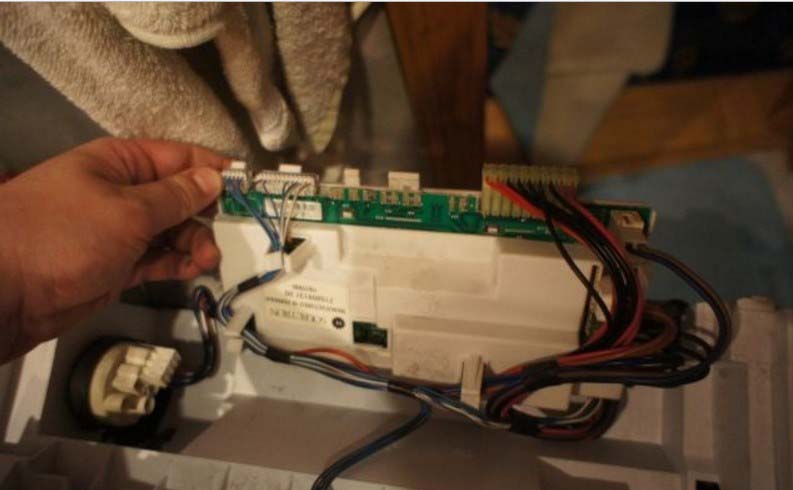
- It is necessary to disconnect the washing machine from the power supply;
- the top panel should be removed;
- by pressing the latch on the powder tray and carefully pulling it towards you, remove it;
- unscrew the screws securing the control panel;
- carefully press the latches from the plastic material, disconnect the above panel;
- You now need to release the wiring, release the latch and remove the board.
- If there are no visible signs of damage on its surface, you can safely go to the service center for the services of specialists.
Proper operation of the washing machine
In order for your household appliances to work for as long as possible and not fail in inappropriate situations, it is recommended to treat them with care, fulfilling certain requirements:
- Before loading things into the drum, you should check the contents of the pockets and remove anything that could cause the filter to break or clog;
- It is recommended to install a filter in the house that regulates the incoming voltage. It often changes, which mainly affects the electronic part of the machine;
- washing powder is poured in accordance with the standards so that excess does not clog the grate or accumulate in the tray;
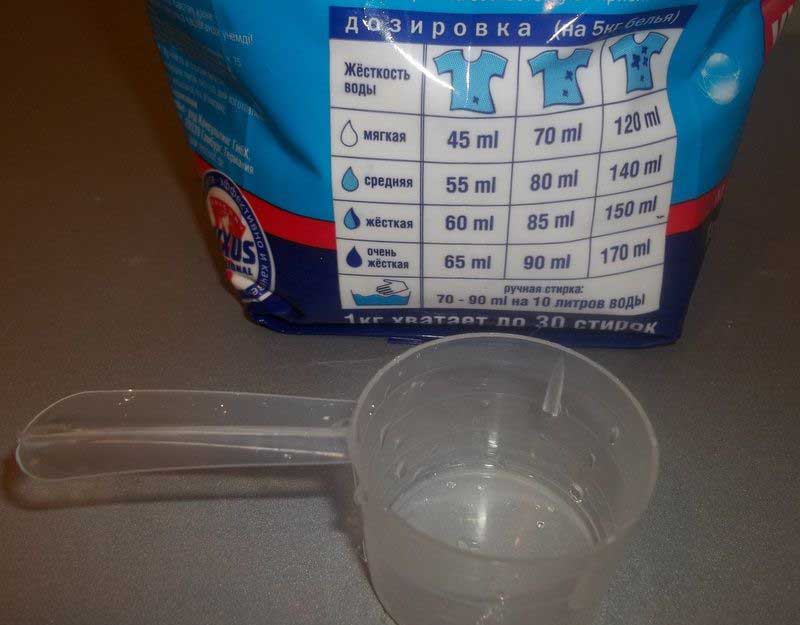
Measuring cup for washing powder
- It is forbidden to overload the washing machine drum so that the sensor responsible for the resulting imbalance does not turn off the maximum rotation.
Remember that replacing washing machine electronics can sometimes be expensive. In such situations, it is more advisable to consider purchasing a new unit.
By following all the recommendations, you can do without much hassle and financial expenses, and you will remember what exactly should be done in each case when the washing machine fails to spin clothes.
Preventive measures
The best option for extending the life of your machine is to prevent the unpleasant consequences of sudden breakdowns. It is recommended not to stop caring for the unit at the end of the next washing process. This procedure is not difficult and does not require much time either:
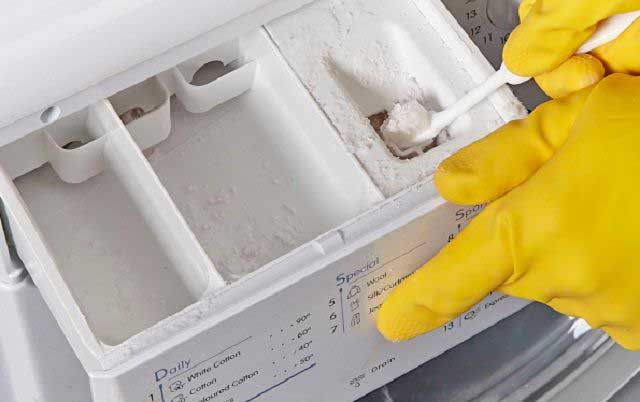
- Remove the tray for washing powders and rinse it thoroughly under hot water;
- rinse the niche intended for the dispenser, wipe it dry;
- wipe the rubber cuff around the loading hatch to prevent all kinds of debris from accumulating on it in the form of threads, powder residues, etc.;
- You should not immediately close the door tightly - the drum of the machine and its other internal parts should dry well;
- Do not wash the inner walls of the drum with abrasive compounds.
A good housewife, who cares about her assistant, organizes a wet cleaning of the room and its ventilation after each wash. In addition, it is necessary to inspect the washer for leaks, even minor ones, because they will still turn into major problems.
Conclusion
There are a sufficient number of places that can become problematic in any technique. One thing to remember is that you should not try to independently diagnose or repair your washing machine if you do not have special skills. Modern devices of this level are “stuffed” with electronics to such an extent that your every action can lead to irreversible processes. It is recommended to trust professionals who will carry out all the necessary steps to get your machine working normally again.










When the machine washes but does not spin, the problem may be in the washer motor. In this case, spinning is simply impossible, or it passes, but too weakly.